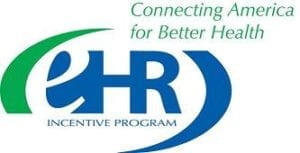According to Elisabeth Myers, policy and outreach lead at the CMS Office of eHealth Standards and Services, as of May $23.7 billion in electronic health record incentives have been paid to eligible hospitals and physicians over the last three years. That was up from $22.9 billion as of April, said Myers.
“That $24 billion, by the way, does not include the Medicaid investments that are going on now and will continue until 2021,” says Karen DeSalvo, MD, National Coordinator for Health Information Technology.
DeSalvo estimate future Medicaid incentive payments may reach an additional $16 billion.
While there were differences of opinion between EHR vendors, providers and policymakers over the difficulties in meeting meaningful use requirements, the EHR incentive program continues to grow.
Additional trends in the EHR Incentive Program provided by the CMS include:
- 88 percent of eligible professionals have registered for the Medicare or Medicaid EHR Incentive Programs
- Over 91 percent of eligible hospitals have received an EHR incentive payment for meaningful use or AIU (for Medicaid)
- 68 percent of Medicare and Medicaid eligible professionals have made a financial commitment to an EHR
- More than 380,000 Medicare and Medicaid eligible professionals have received an EHR incentive payment
While enrollment in the incentive program has been high, meeting Stage 2 requirements has been a serious issue. The attestation challenge is particularly troublesome with hospitals. While most have received a payment, most are also struggling with Stage 2.
According to data released by the Centers for Medicare & Medicaid Services, only eight of 75 eligible hospitals have attested for meaningful use Stage 2. Physicians haven’t fared a whole lot better, with 447 out of 1,497 eligible providers attesting for Stage 2.
In May, the American Medical Association (AMA) sent a letter to the CMS and the Office of the National Coordinator for Health Information Technology (ONC) protesting the way the incentive program is being handled. They warned the following consequences unless there weren’t significant changes made:
- More physicians will drop out of the incentive program (CMS data showed a 20 percent dropout rate in 2013)
- Patients will suffer from disruptions and inefficient care, due to existing EHR problems
- Thousands of physicians will incur financial penalties, which will hinder their ability to make technology purchases and limit care resources
Some of the AMA recommendations to avoid an increase in the meaningful use dropout rate include:
- Ease the existing “all-or-nothing” passing rate down to 75 percent for achieving meaningful use
- Physicians who meet at least 50 percent of the meaningful use requirements should be able to avoid a financial penalty
- CMS should better align quality reporting programs
- Remove mandates that physicians have no control over
According to ONC analysis, individual practitioners and physicians in rural and high poverty areas had the greatest risk for failing to achieve meaningful use.

